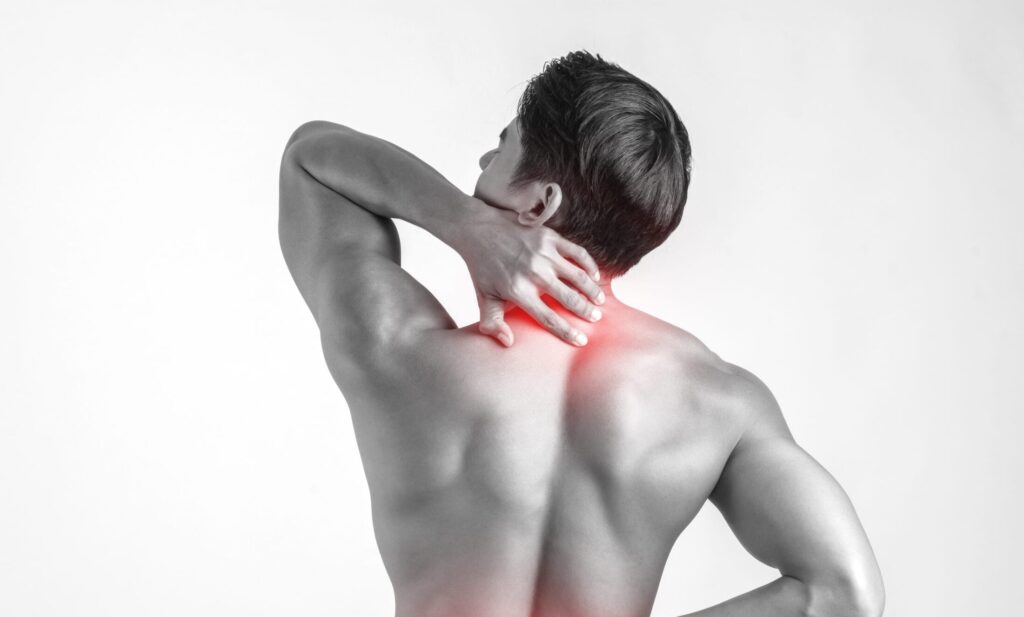
Musculoskeletal disorders are the main cause of disability in the working-age population and are among the leading causes of disability in other age groups. Myofascial pain syndrome is a common painful muscle disorder caused by myofascial trigger points. Pain and limited function of the locomotor (or musculoskeletal) system are two of the most common reasons for consulting a doctor or therapist. The fascia & muscles have a key role in this, because of their anatomical and functional properties. The importance of the muscles is frequently underestimated in practice, however, although muscular imbalances, muscle tension and painful disorders of muscle function play a large part in both acute and chronic locomotor system symptoms, according to current knowledge. The clinical correlate is the myofascial trigger point (mTrP). We rely for the most part on the guidelines of the pioneers in the field of trigger point research, Janet Travell and David Simons (Travell, Simons 2002). Simons et al. (1999) have claimed that myofascial trigger points (TrPs) from neck and shoulder muscles might play an important role in the genesis of mechanical neck pain. There are epidemiological studies suggesting that TrPs represent an important source of musculoskeletal disorder (Chaiamnuay et al., 1998).
We understand the mTrP to be a site or band that is hypersensitive and palpably tense compared to the surrounding area in a muscle that is often shortened, and which demonstrates changes in tone and consistency (‘taut band’). It is painful when palpated and from it pain and autonomic disorders may be caused in an area that cannot usually be attributed to a particular segment (‘referred pain’). We describe the resulting muscle pain as myofascial pain syndrome (MPS). The formation of TrPs may result from a variety of factors, such as severe trauma, overuse, mechanical overload or psychological stress (Simons et al., 1999). Recent studies have hypothesized that the pathogenesis of TrPs results from injured or overloaded muscle fibres. This leads to involuntary shortening, loss of oxygen supply, loss of nutrient supply and increased metabolic demand on local tissues (Mense et al., 2000).
Diagnostic criteria are:
- A localised, dull, pressing, dragging, occasionally burning spontaneous pain associated with acute or chronic muscular strain
- The pain is often described as spreading or radiating.
- Referred pain is an important characteristic of a trigger point
- Tenderness with typical pain reproduction within a palpable ‘taut band’ of muscle,
- A pain that predominantly radiates in a distal direction after mechanical stimulation,
- Painful limitation of movement,
- Muscular weakness without atrophy.
As these are not ‘hard’, evidence-based criteria but subjective information and findings, an appropriate finding oriented medical differential diagnosis is an indispensable prerequisite for making the diagnosis of ‘myofascial pain’ with or without limitation of movement
In the head and neck region, myofascial pain syndrome with trigger points can manifest as tension headache, tinnitus, temporomandibular joint pain, eye symptoms, and torticollis. Upper limb pain is often referred and pain in the shoulders may resemble visceral pain or mimic tendonitis and bursitis. In the lower extremities, trigger points may involve pain in the quadriceps and calf muscles and may lead to a limited range of motion in the knee and ankle.
The muscular fascial network suggests the following applications in relation to trigger points: pain sensations caused by trigger points supposedly originate mostly from fascial receptors which have undergone sensitisation. A possible treatment plan is a therapeutic stimulation and proprioceptive sensitisation of other fascial receptors (preferably in the area belonging to the same cortical area). Fascial changes supposedly also play a key role in changed muscle stiffness in the area around a trigger point as well.
Principles of Treatment:
PHYSIOTHERAPIST –PATIENT RELATIONSHIP: The key influential factor for the success of treatment is a ‘healing’ physiotherapist–patient relationship. In patients with chronic myofascial pain, in particular, psychosocial stress factors must also be evaluated and included early on in the consultation.
The treatment plan for myofascial trigger point therapy (MANUAL TECHNIQUES AND DRY NEEDLING) – Ischaemic compression of the mTrP, Manual stretching of the mTrP region
Fascia stretching technique, Manual stretching of the superficial and intramuscular fascia etc
Functional training, ergonomics, Physiological weight-bearing and exercise support the regeneration process and make the muscles more resilient
- Ergonomics reduces incorrect strain on the muscles
Summary
The aim of trigger point therapy is to provide a permanent cure for myofascially caused pain and functional disorders. Otherwise, recurrences inevitable
This requires:
- finding the relevant active trigger point,
- deactivating the relevant trigger point using manual techniques and/or dry needling,
- providing thorough manual treatment of the connective tissue changes which occur as a reaction, especially with chronic symptoms,
- recognising the factors which cause the problem to persist and including them in the treatment process
- Predisposing and perpetuating factors must be recognised and included in the treatment strategy in the form of ergonomics and functional training of the muscles
ANRC Phases of Rehabilitation
- Deactivation of trigger points and Pain Relief ( Trigger Point Therapy, Myofascial Release, Taping, Electrotherapy modalities, relaxation Training etc)
- Restoration of Range of movement – Stretches, Postural training, Basic Strength Training
- Maintenance Phase & Improve the activity of daily living – Intensive Strength Training, Ergonomic Training etc
Reference
Myofascial Trigger Points Comprehensive diagnosis and treatment; Edited by Priv. Doz. Dr. med. Dominik Irnich: Toronto 2013 First edition published in English © 2013, Elsevier Limited. All rights reserved.
Trigger Points: Diagnosis and Management DAVID J. ALVAREZ, D.O., and PAMELA G. ROCKWELL, D.O., University of Michigan Medical School, Ann Arbor, Michigan.
Myofascial trigger points in subjects presenting with mechanical neck pain: A blinded, controlled study
C. Ferna´ ndez-de-las-Pen˜ as_, C. Alonso-Blanco, J.C. Miangolarra Department of Physical Therapy, Occupational Therapy, Physical Medicine and Rehabilitation, Universidad Rey Juan Carlos (URJC), Alcorco´n, Spain Received 12 November 2004; received in revised form 4 January 2006; accepted 3 February 2006
Quick Contacts
- Phone : +44 7483 807551
- Email : info@anrc-uk.com
- Locations : Horsham, East Grinstead, Ashurstwood, Lingfield
- Country : United Kingdom










